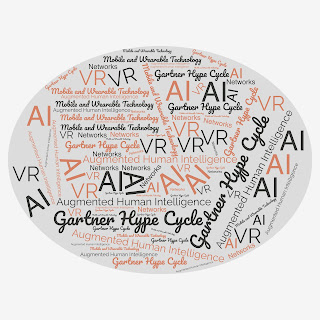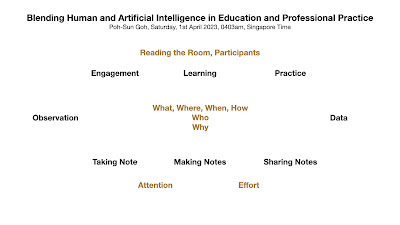IAMSE 2023 - Pre-Conference Course, Saturday, 10 June 2023, Cancun
http://www.iamse.org/you-cant-miss-the-iamse-annual-conference-in-2023/
https://julnet.swoogo.com/iamse2023/agenda
Session Details
Name
Pre-Conference Course: The 5S of Small, Sustainable, Steps to Successful Scholarship for Health Professions Educators
Date & Time
Saturday, 10 June 2023, 12:15 - 15:15
Speakers
Alice Fornari - Donald and Barbara Zucker SOM at Hofstra/Northwell
Mildred López - Tecnologico de Monterrey
Sol Roberts-Lieb - Carle illinois College of Medicine
Elisabeth Schlegel - Western Atlantic University School of Medicine
Poh-Sun Goh - National University of Singapore
Description
Getting started and continuing in scholarship can be a challenge for all faculty as faculty need to know the how and have continuous faculty development in a distributed world. This workshop will provide participants with the theoretical background of Micro-Scholarship ( Goh, Roberts-Lieb, Sandars 2022), the process and potential use of a wide variety of technologies for Micro-Scholarship, and an opportunity to actively plan how they can develop and present their own scholarship of being a medical educator. In addition, participants will develop their approach to metareflection and identify supportive communities of practice and mentors.
Session Type
Pre-Conference
http://www.iamse.org/
building on previous presentation and published work below:
IAMSE Virtual Forum Lightning Talk, 5th or 6th December 2022
https://medicaleducationelearning.blogspot.com/2022/12/iamse2022virtualforum-lightningtalk_2.html
Our 'pitch' and key takeaway is a simple one:
That Learning, and Scholarship are similar; both taken in small iterative, cumulative steps. We learn best and engage in scholarship working together within a Community of Interest and Community of Practice. Scholarship is open, public practice, an extension of learning. We "See (one), Do (one), Teach (one) … Write (‘do’ Scholarship .. then ‘be’ a Scholar .. then) Teach (again)". We "Take Note, Make Notes, then Share Notes". - Poh-Sun Goh, 26 November 2022, Saturday, 0423am, Singapore Time
https://julnet.swoogo.com/iamsevirtualforum22/2818602
https://julnet.swoogo.com/iamsevirtualforum22/2421279
https://julnet.swoogo.com/iamsevirtualforum22
--
Goh, P. S., Roberts-Lieb, S., & Sandars, J. (2023). Micro-Scholarship: An innovative approach for the first steps for Scholarship in Health Professions Education. Medical teacher, 45:3, 307-312.
https://doi.org/10.1080/0142159X.2022.2133689
above first posted on
https://medicaleducationelearning.blogspot.com/2023/05/strategies-for-developing-open.html
⬇️
Opening comments for #TeLMedEd Workshop #@CenMed
⬇️
Below section first posted on
⬇️
One sentence takeaway -
Poh-Sun Goh
22 February 2021 @ 1955hrs
"Hungry students, trained teachers, know (and use) what is available (and at hand)."
#MakeSureYourCoreContent-Is-#Modular+#Accessible-#Transferable+AcrossPlatforms-Current-Future. Poh-Sun Goh, 6 May 2021, 1045am, Singapore Time
⬆️
🔄
--
Goh, PS. 'Medical Educator Roles of the Future'. Medical Science Educator. Online publication 30 September 2020. https://doi.org/10.1007/s40670-020-01086-w
🔄
Basically am modelling the curatorial role of an educator + some customisation + use of technology + sprinkled with 'scholarship of integration, application and education' ...
Poh-Sun Goh
🔄
'Final Tip' - I have always found analogies useful - the learning science of this (using analogies) - is 'linking' new to familiar or old (new to prior knowledge).
Poh-Sun Goh
(in case you all are wondering ... idea is to make each teaching element a potential, and actual 'reusable digital object') ... hence the screenshots
Poh-Sun Goh
Digital first. Digital ready. From the very beginning.
Poh-Sun Goh
Happy studying.
---
👇
start here
https://medicaleducationelearning.blogspot.com/2022/12/micro-content-bite-size-modular-content.html
👇
building on earlier post
Micro-Learning, Micro-Practice and Micro-Scholarship : Making Major Moves one micro-step at a time, Accessible and Available to All
https://medicaleducationelearning.blogspot.com/2022/06/micro-learning-micro-practice-and-micro.html
👇
and
https://medicaleducationelearning.blogspot.com/2022/12/micro-content-bite-size-modular-content.html
and
https://telmeded.blogspot.com/2022/03/telmeded-workshop-cenmed-nus-2022.html
Goh, P. S., Roberts-Lieb, S., & Sandars, J. (2023). Micro-Scholarship: An innovative approach for the first steps for Scholarship in Health Professions Education. Medical teacher, 45:3, 307-312. https://doi.org/10.1080/0142159X.2022.2133689
"(Open) Micro-Scholarship is an extension of (open) Micro-Practice and Micro-Learning; from Taking note, to Making notes, to Sharing notes." - Poh-Sun Goh, 22 October 2022, Saturday, 22 October 2022, 0731am, Singapore Time
https://microscholarship.blogspot.com/
This guide complements and expands on open access publication - Goh, P. S., Roberts-Lieb, S., & Sandars, J. (2023). Micro-Scholarship: An innovative approach for the first steps for Scholarship in Health Professions Education. Medical Teacher, 45:3, 307-312.
https://doi.org/10.1080/0142159X.2022.2133689
Links to open access websites within the guide below:
https://mwdl.org/collections/HealthEducationAssetsLibraryHEAL.php now available below link
https://library.med.utah.edu/heal/ (Health Education Assets Library (HEAL), a collection of > 22,000 freely available digital materials for health sciences education, is now housed at the University of Utah J. Willard Marriott Digital Library)
---
Goh, PS, Schlegel, E. (2023). Small, Sustainable, Steps to Success as a Scholar in Health Professions Education - Micro (Macro and Meta) Matters. TAPS, 8(2), 76-79. https://doi.org/10.29060/TAPS.2023-8-2/SC2861
Goh, PS, Schlegel, E. Small, Sustainable, Steps to Success as a Scholar in Health Professions Education - Micro (Macro and Meta) Matters. (The Asia Pacific Scholar, submitted revision on 3 October 2022, accepted for publication 1 November 2022; to be published in April 2023 issue.)
The Asia Pacific Scholar Journal Homepage
Roberts-Lieb, S, Goh, PS, Sandars, J. Using Technology for Translating Micro-Scholarship to Practice. (Medical Science Educator - resubmitted after revision, Saturday, 11 March 2023)
Medical Science Educator Journal Homepage
http://www.iamse.org/medical-science-educator/
Heather MacNeill, Ken Masters, Kataryna Nemethy & Raquel Correia (2023) Online learning in health professions education. Part 1: Teaching and learning in online environments: AMEE Guide No. 161, Medical Teacher, DOI: 10.1080/0142159X.2023.2197135
https://www.tandfonline.com/doi/abs/10.1080/0142159X.2023.2197135?journalCode=imte20
---
Digital Scholarship in Medical Education - Three key takeaways"The use of technology to support educational scholarship has been called digital scholarship" (Goh and Sandars, 2019)
Goh PS, Sandars J, 2019, 'Digital Scholarship – rethinking educational scholarship in the digital world', MedEdPublish, 8, [2], 15,
https://doi.org/10.15694/mep.2019.000085.1Digital Scholarship to make (our efforts) visible, accessible, and assessable
Digital scholarship, to add to academic discourse, and get recognised for this
(can be disseminated and scaled up on Social Media)
➡ 'Digitalisation is' - 'Digitalisation is the incorporation of digital technologies into business/social processes, with the goal of improving them'.
quoted from
https://www.scrive.com/digitalisation/Digitalisation can:
Show what we teach with and assess on.
Show how we teach, and students learn.
Show outcomes and impact of our educational and training efforts.
Allow us to engage in and demonstrate scholarship in a visible, accessible and assessable manner.
Poh-Sun Goh, 28 June 2020 @ 0849am
Digital Scholarship is:
"The use of technology to support educational scholarship has been called digital scholarship" (Goh and Sandars, 2019)
Goh PS, Sandars J, 2019, 'Digital Scholarship – rethinking educational scholarship in the digital world', MedEdPublish, 8, [2], 15,
https://doi.org/10.15694/mep.2019.000085.1Digital Scholarship to make (our efforts) visible, accessible, and assessable
Digital scholarship, to add to academic discourse, and get recognised for this
(can be disseminated and scaled up on Social Media)
e.g.
https://medicaleducationelearning.blogspot.com/2020/03/a-vision-of-use-of-technology-in.html
above from
"Rethinking the Scholarship of Teaching and Learning for a Digital Age" by Poh-Sun Goh
available on the following blogpost ⏯
https://medicaleducationelearning.blogspot.com/2019/05/sotl-and-rime-workshop-cenmed-wednesday.htmlreproduced below section:
Rethinking the Scholarship of Teaching and Learning for a Digital Age
Poh-Sun Goh
The Scholarship of Teaching and Learning (SoTL) is a set of unifying ideas centred around proposals put forward in a series of scholarly articles by Boyer, Glassick, Hutchings and Shulman, and embraced by the scholarly community (Boyer 1990; Glassick 2000; Hutchings & Schulman 1999). The aim of this Short Communication is to expand upon each category of scholarship proposed by Boyer, by adding the scholarship of Creation, Curation with attribution, Transfer to practice, and Workplace/Lifelong learning; add to Glassick’s six standards the Digital standards of Openness and Visibility, and expand on Hutchings and Shulman’s three minimum requirements of scholarship by incorporating ideas from networked learning and connectivism by George Siemens (Siemens 2005). We hope that this article contributes to move forward thinking on the SoTL, for a Digital Age.
The Scholarship of Creation is well accepted in the Arts, and has analogies to the creative process when a medical educator creates educational materials. A strong argument can be made, and has been made that this is similar to the recognition that artists receive, particularly when their work is presented for public review, critique and commentary (Boyer 1990; Hutchings & Schulman 1999). The creation of digital materials for medical education and training, is hard work, often inspirited by the same creative impulse that drives artistic endeavours, particularly when imbued with an intentional, informed, reflective, scholarly approach; and is similar to the scholarship of discovery. Awareness of this should be raised in both the medical education community, and amongst our administrative peers, to recognise and reward medical education scholars during appointments, promotion and the tenure process.
Similarly, the act of artistic curation, and the professional work of curators in the Arts, has similarities to the work of medical educators, when we assemble educational and training materials. A strong argument again can be made that this has similarities to the Scholarship of Integration (Boyer 1990), and should be given academic and professional recognition and reward, similar to the Scholarship of Creation. Digital platforms and processes makes the Scholarship of Curation open, accessible and visible.
Taking this argument further, the act, or Scholarship of Transfer to Practice, has an analogy with the Scholarship of Application. Digital practice makes this again particularly open, and visible to peers, assessors and evaluators, and when a scholarly approach as proposed by Glassick (2000) is applied to this Scholarship of Practice, appropriate academic recognition can be again accorded to this effort.
The focus of outcomes of learning and teaching guides both the Scholarship of Teaching, and our focus in Workplace and Lifelong learning. Technology enhanced learning (TEL), makes the educational and learning process, as well as performance outcomes of this process open and visible, through a digital analytics process (Goh 2017).
As we examine the categories of scholarship proposed by Boyer, the affordances of digital teaching and learning, and draw analogies and inspiration from practices in the Arts; an argument can be made that awareness, and recognition of the efforts of medical educators in Creation, Curation, Transfer to Practice and Workplace and Lifelong learning can and should given.
References:
Boyer EL. 1990. Scholarship Reconsidered: Priorities of the Professoriate. Princeton, NJ: Carnegie Foundation for the Advancement of Teaching.
Glassick CE. 2000. Boyer's expanded definitions of scholarship, the standards for assessing scholarship, and the elusiveness of the scholarship of teaching. Acad
Med. Sep;75(9):877-80.
Siemens G. 2005. Connectivism: A learning theory for the digital age.International Journal of Instructional Technology and Distance Learning, 2(1), 3-10.
Hutchings P, Shulman LS. 1999. The Scholarship of Teaching: New Elaborations, New Developments, Change: The Magazine of Higher Learning, 31:5, 10-15, DOI: 10.1080/00091389909604218
Three takeaways:
1) The scholarship categories proposed by Boyer (Discovery, Integration, Application and Teaching) can be each expanded to include Creation (Digital content and online repositories), Curation with attribution, Transfer to practice and Work place/Life long learning.
2) That we add to Glassick's six standards (Clear goals, adequate preparation, appropriate methods, significant results, effective presentation and reflective critique) with Digital standards of openness (with focus on making the learning process, and data to inform - demonstrate outcomes of learning visible and accessible openly online).
3) That we expand on Schulman's three minimum requirements of scholarship (public, in form suitable for critical review and evaluation, accessible for exchange with, and to be build upon by other members of the scholarly community) for the digital age, incorporating the ideas from George Siemens (
connectivism: a learning theory for the digital age) combined with classical educational pedagogy of relevant, contextual, collaborative, active learning with feedback.
https://medicaleducationelearning.blogspot.com/2018/09/digital-scholarship.htmlWeller, M. (2011) The Digital Scholar: How Technology Is Transforming Scholarly Practice. London: Bloomsbury Academic.
http://dx.doi.org/10.5040/9781849666275see Chapter 1: Digital, Networked and Open
and Chapter 4: The Nature of Scholarship
and Chapter 11: Reward and Tenure
Artino, A. R., Jr, Zafar Iqbal, M., & Crandall, S. J. (2023). Debunking the Learning-Styles Hypothesis in Medical Education. Academic medicine : journal of the Association of American Medical Colleges, 98(2), 289.
https://doi.org/10.1097/ACM.0000000000004738 🔺
and
⬆
https://9to5mac.com/2023/04/01/steve-jobs-archive-book/
https://stevejobsarchive.com/
https://stevejobsarchive.com/internal-meeting-at-apple

%20in%20Medical%20Education%20.jpg)





































Learning%20or%20T(e)L%20in%20Med%20Ed.jpg)

